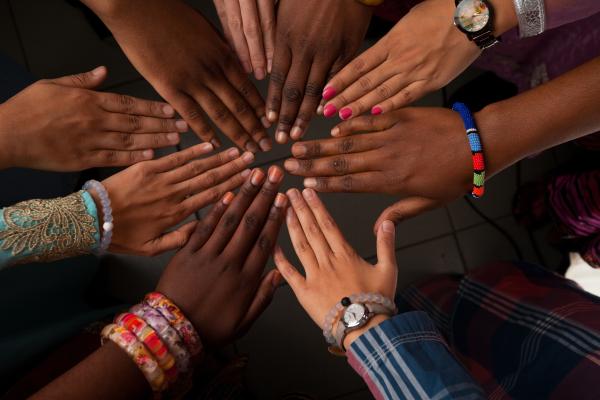Query 211 - Nature and Prevalence of Cyber Violence against Women and Girls
Read this report on the nature and prevalence of cyber violence against women and girls.
 Our global Gender-Based Violence (GBV) team provides strategic technical support to actors across the GBV ecosystem from donors to community-level women-led organisations. We are a multi-disciplinary team delivering programme design and implementation support, advocacy, research reports, MEL and helpdesk services.
Our global Gender-Based Violence (GBV) team provides strategic technical support to actors across the GBV ecosystem from donors to community-level women-led organisations. We are a multi-disciplinary team delivering programme design and implementation support, advocacy, research reports, MEL and helpdesk services.
Our team aspires to apply our feminist principles in all our work and to support sustained and transformative change. We partner with diverse stakeholders and we take an intersectional approach to our work on GBV prevention and response across development and humanitarian contexts.
Our work includes primary prevention programming, community-level response to GBV and SEAH, school-related GBV, GBV in Emergencies, Technology-Facilitated GBV, Violence against LGBTQI+ communities, and GBV in Climate and Economic programming.
Read more about our current work or search our extensive GBV Resource Library below.
Read this report on the nature and prevalence of cyber violence against women and girls.
Find out what works to prevent cyber violence against women and girls, including digital tech based solutions.
Good practice guidance, resources and minimum standards around the implementation of Girls' Clubs.
Evidence and lessons learned on the management of gender-based violence shelters, drawing on East Africa (regional) and global evidence.
Helpdesk report on whether there is a rollback of women's rights globally, and the impact on women's safety and security.
Evidence on the relationship between male and female employment status (in large-scale infrastructure projects) and violence against women and girls in the domestic and public sphere.
Evidence on international best practice on designing and managing safe accommodation for housing women workers.
Evidence on the main forms and divers of Sexual and Gender-Based Violence (SGBV) and gender inequality across the Africa region.
Evidence on which groups of women and girls are most at risk from violence in the health sector.
Evidence of coercion in family planning and maternal health settings.